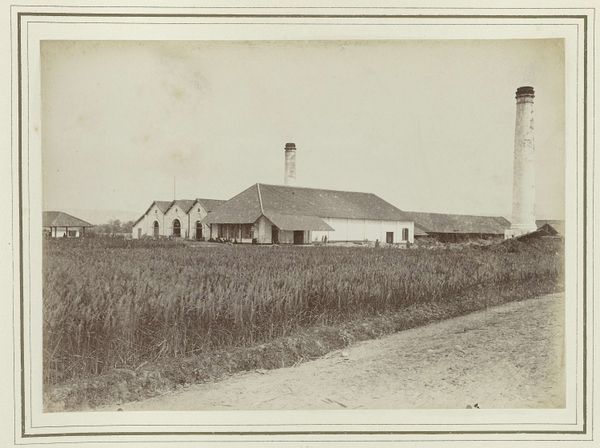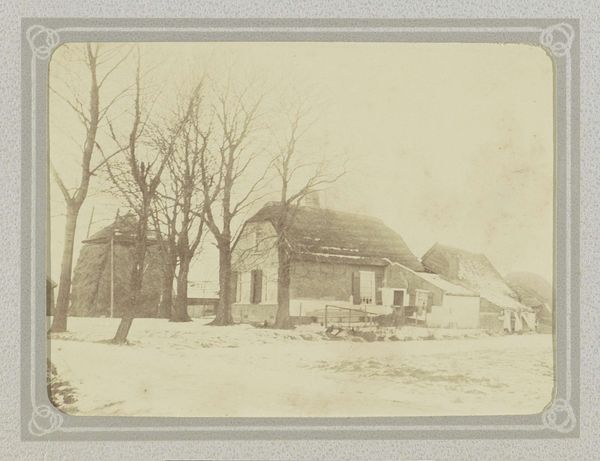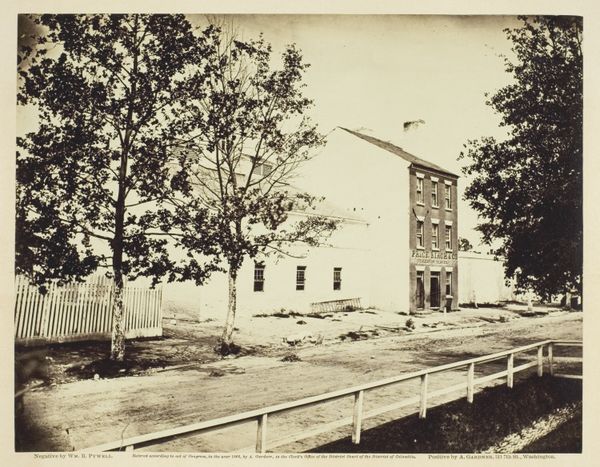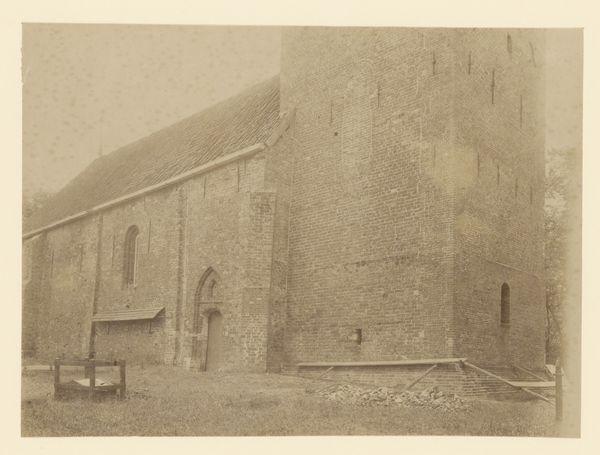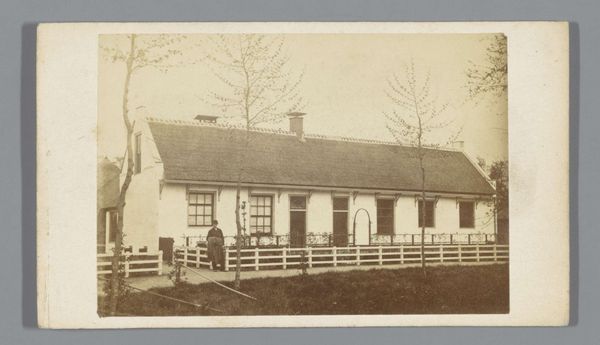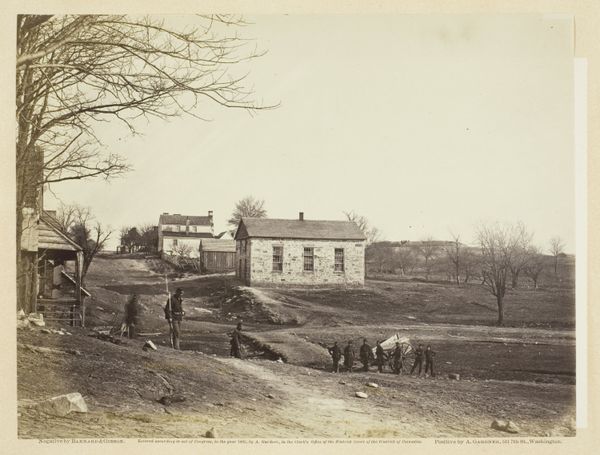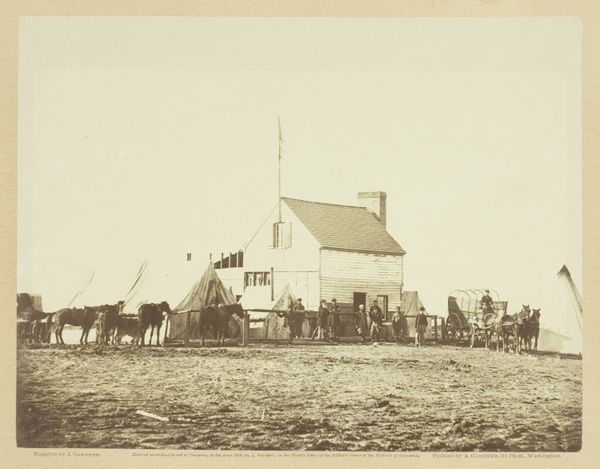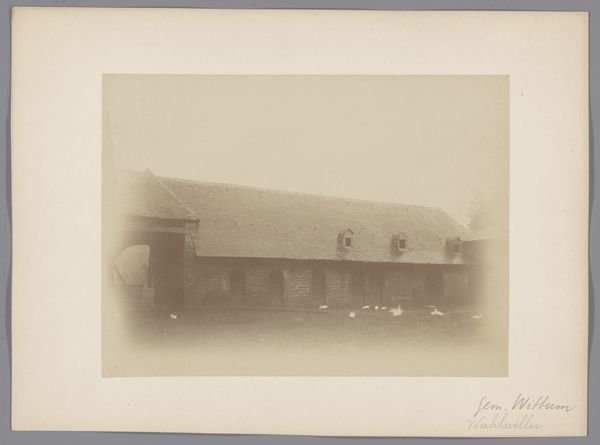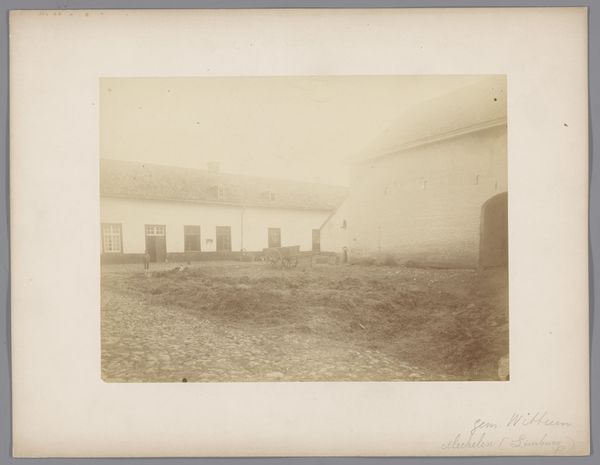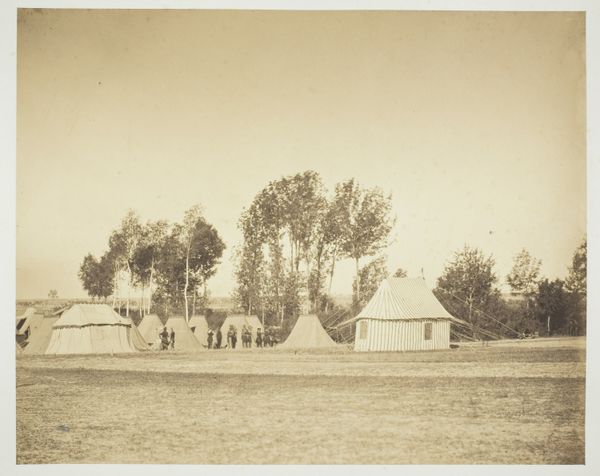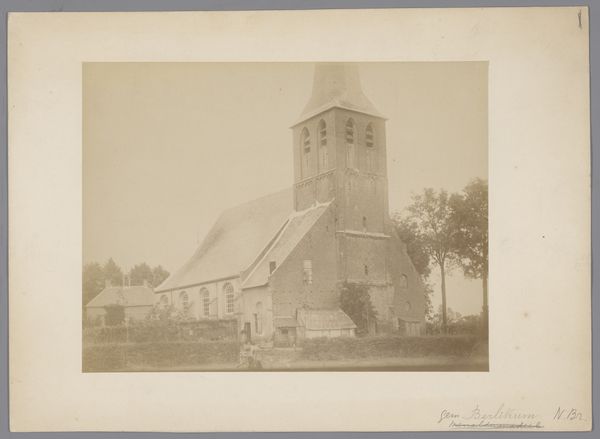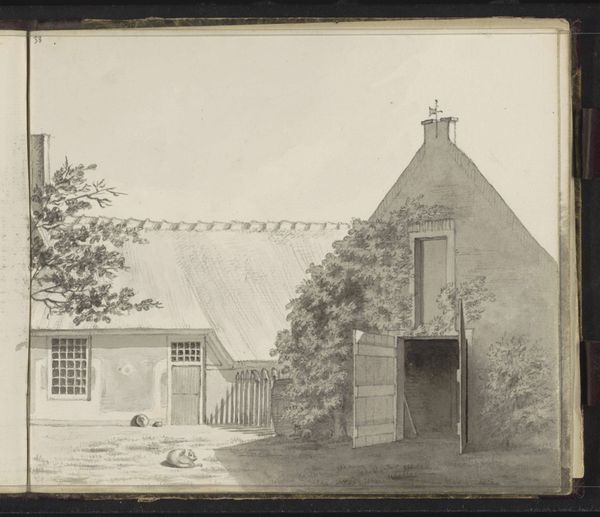
photography, gelatin-silver-print
#
landscape
#
photography
#
gelatin-silver-print
#
19th century
#
realism
Dimensions: height 107 mm, width 167 mm
Copyright: Rijks Museum: Open Domain
Curator: What a striking scene. Sytze Reinder Elzinga's gelatin-silver print, "Militair terrein bij Goes," likely captured between 1882 and 1903, presents a remarkably clear view of a military site. The muted sepia tones evoke a palpable sense of the past. What stands out to you? Editor: My immediate thought is that the light and shadow give the scene an unsettling calm, an eerie anticipation hanging in the air. The architectural forms are austere, almost oppressive. It evokes a sense of unease. Curator: Interesting observation. Elzinga's choice of the gelatin-silver process is key. This technique, prevalent at the time, allowed for finer details and tonal range, effectively rendering the materiality of the brick and the open land, foregrounding how photography was starting to both represent and alter space through new optical technology. Editor: Exactly! And let’s not overlook the social implications. Military spaces are always laden with power dynamics, gender, and socioeconomic disparities. This image, seemingly just documenting a physical location, is also implicated in the visual construction of nationalism and perhaps, subtle classism. It would be interesting to trace if photography as a new tool contributed to building militaristic sentiment. Curator: Good point about the possible military agenda. Thinking of materials, how about the laborious process itself? From setting up the cumbersome equipment to developing the print, each step reflects the worker and material in a slow craft tradition that contrasts the quick and almost disposable images of today's digital sphere. These practices were anything but transparent. Editor: Yes, a critical examination makes me think: whose narrative are we seeing? What events have been silenced to create this quiet view of productivity? Where are the people whose labor made that military enterprise possible, and are excluded in the composition of this landscape? The image speaks loudly through it's intentional omission. Curator: That critical engagement with absent narratives is helpful to recontextualize the photograph! Focusing on the technique again helps me understand how images shape society itself by recording labour. Thanks for bringing the complex social history of "Militair terrein bij Goes" into sharper focus. Editor: Thank you. It is a worthwhile examination. I’m still captivated by the sense of foreboding, and now that sensation seems even more pertinent, colored with a perspective I was unable to articulate at the start.
Comments
No comments
Be the first to comment and join the conversation on the ultimate creative platform.
